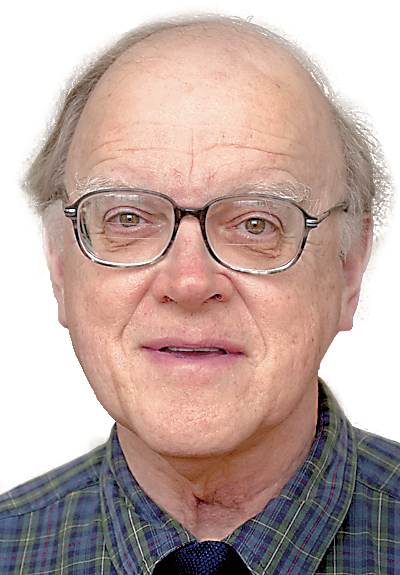President Trump released his budget proposals for the federal fiscal year on May 23. Among the major reductions in health-related spending are ruinous cuts in funding for medical research.
The National Institutes of Health fund basic scientific and clinical research in university medical centers and research institutes across the nation. This decentralized approach leads to a richer array of investigations based upon the work of thousands of scientists. A grant may be centered in one institution or may involve collaboration with scientists in multiple research centers.
Research into a particular problem may extend over many years. A senior investigator may spend the majority of her career in defining basic mechanisms of a disease from which another researcher may discover a novel therapy. A research team may include seasoned scientists, post-doctoral fellows and graduate students and involve such disciplines as cell biology, biochemistry, virology, pathology and clinical medicine. On-the-job training for younger scientists is invaluable in providing a skilled workforce to propel future scientific discovery.
Grants are dispersed in two streams. One provides direct research support including salaries, equipment and other supplies. A second supports a portion of the infrastructure of the institution in which the research is housed. The host institution provides the majority of support for infrastructure. These expenses include building, outfitting and maintaining laboratory space for the specialized needs of each project.
Instead of providing up to 40 percent of infrastructure costs, the new budget caps this support at 10 percent. This places a sudden, unaffordable burden upon institutions participating in NIH-funded research. Vanderbilt University's medical research would lose more than $90 million annually.
Four NIH-funded programs at Vanderbilt reflect the diversity of present-day research:
- A 2016 multi-year grant established a center to coordinate and support a study of 1 million participants in a multi-year program to investigate how best to personalize medical care to maintain health and to treat disease.
- A joint study with the University of North Carolina evaluates a new anti-viral agent that might be effective in preventing and treating SARS and MERS infections. These diseases are severe and have a high mortality rates. Outbreaks of MERS are occurring currently in the Middle East.
- Another study involving multiple scientists studies new mechanisms to lower blood glucose levels in people with diabetes. The focus of this investigation is glucagon, a hormone produced by the pancreas that increases blood sugar production. If glucagon production could be safely blocked, then diabetes could more readily be controlled.
- A team has isolated specialized stem cells that regulate the development of microscopic blood vessels in lung tissue. These cells may hold the key to new treatments for obstructive lung disease (emphysema) and pulmonary fibrosis.
Research cannot be abruptly turned on and off like a water tap. An individual project may take months to recruit a team and to set up the necessary laboratory. For example, research into viruses that trigger cancer may require careful collection and establishment of normal and abnormal cells, which must be carefully maintained in tissue cultures before further work can proceed. An abrupt shutdown of a research project such as this could take years to restore.
Our country's unique blend of public-private partnerships in medical research has fostered dramatic, accelerating breakthroughs in our understanding of health and sickness. New therapies emerge each year that provide hope for once incurable diseases.
The U.S. research enterprise is the envy of the world. This work would be irreparably damaged if the administration's severely reduced allocation for research is approved. The funding of medical research is an investment in the future well-being of all Americans, as well as people throughout the world. Congress must protect medical research. This is not a partisan issue.
Contact Clif Cleaveland at ccleaveland@timesfreepress.com.

